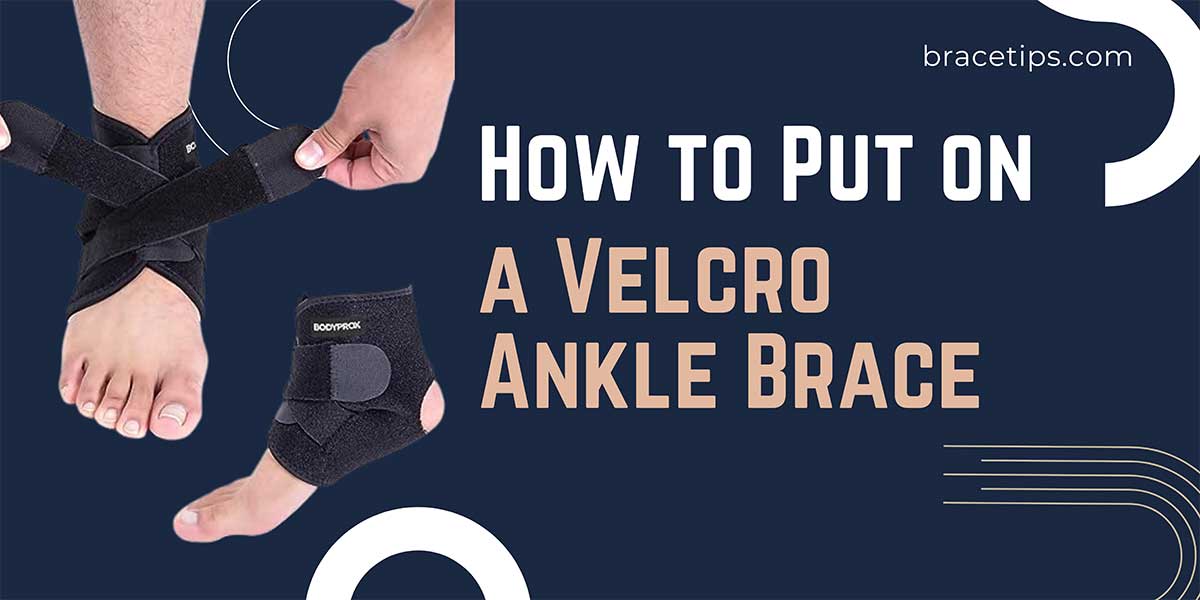Ankle injuries are common, especially among athletes. A Velcro ankle brace can provide important support during sports, daily activities, and recovery after surgery. This article explains how to properly put on a Velcro ankle brace and answers frequently asked questions about its use.
What Conditions need the use of an Ankle Support Brace
- Sprains and strains: Ligaments are ripped or stretched in these common injuries. During the healing phase, a brace provides support.
- Post-surgical recovery: Following surgery, an ankle brace protects the operated area and aids in healing.
- Chronic ankle instability: Some people have naturally weak ankles, while others have weak ankles as a result of recurring injury. A brace can provide much-needed support.
- Prevention during high-impact sports: Preventive bracing can help with activities that require a lot of leaps, turns, or abrupt changes in direction.
- Arthritis or age-related ankle weakness: A brace can help minimize pain and enhance mobility as the joint deteriorates.
Preliminary Preparations
- Ensure the brace is the correct size: To choose the proper size, measure around the narrowest portion of your ankle and follow the manufacturer’s instructions.
- Inspection of the brace: Check for damages or wear before each usage, and make sure all Velcro straps are secure.
Should I Put a Sock on My Sprained Ankle
- Benefits: A sock can serve as a barrier, minimizing friction and increasing comfort. It can also absorb sweat, which keeps the brace clean.
- Considerations: For a more snug fit, choose a thin sock. Check that the sock does not bunch up beneath the brace.
Step-by-Step Guide to Putting on the Velcro Ankle Brace
- Position the brace: Check that your heel is aligned with the heel area of the brace.
- Secure the bottom straps: Begin wrapping near your toes, wrapping evenly and without too much stress.
- Adjust the ankle support: Align the lateral supports of your brace with the natural curvature of your ankle.
- Secure the top straps: Wrap them around your ankle to ensure even pressure and to minimize bunching.
- Fine-tune adjustments: Examine the area around the brace. Readjust as needed if any sections seem too tight or too loose.
Tips and Considerations
- Ideal tightness: Your brace should be supportive but not confining. Numbness or tingling indicates that it is excessively tight.
- Wearing with shoes: Check that your shoes can fit the brace without squeezing your foot. Some shoes may require a size up.
- Care: Clean your brace on a regular basis according to the manufacturer’s instructions. To maintain support, replace worn-out Velcro.
Common Mistakes to Avoid
- Over-tightening: This limits blood flow.
- Mispositioning: A brace that is improperly positioned will not provide adequate support.
- Ignoring discomfort: A properly fitting brace should be comfortable. If not, seek professional assistance.
Conclusion
Ankle braces are important aids for both injury prevention and healing. Maximum benefit is ensured by proper application. If in doubt, always seek the advice of a medical expert.
Q&A
Q1: How long should I wear my ankle brace daily?
Ans: The duration is determined by the severity of your injury and the advice of your doctor. Some people may just need it during activities, while others may need it all day.
Q2: Can I sleep with my ankle brace on?
Ans: It’s best to check with your doctor first. Some may recommend it for further support, while others may advise against it in order to allow the skin to breathe.
Q3: How often should I replace my ankle brace?
Ans: When the Velcro no longer sticks properly or if the brace shows signs of wear and tear, it’s time for a replacement. Regular inspection ensures you get optimal support.
Q4: Will wearing an ankle brace weaken my ankle?
Ans: No, although wearing a brace must be combined with strength training and physiotherapy treatments to ensure muscle strength and joint flexibility.

